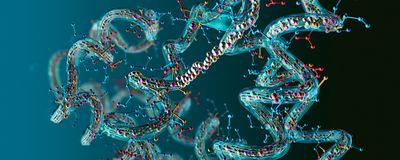Login
Subscribeartificial intelligence

Simplifying the Search for Drug Targets
Aparna Nathan, PhD | Aug 1, 2023 | 3 min read
A new machine learning model promises fast prediction of drug-target interactions.
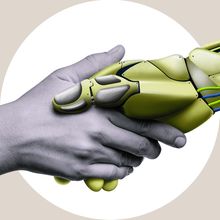
How should we proceed with image-analyzing AI?
Ida Emilie Steinmark, PhD | Aug 1, 2023 | 2 min read
Algorithms can now glean ever more molecular and genetic information from images of stained tissue, but some researchers worry that we can’t follow their logic.
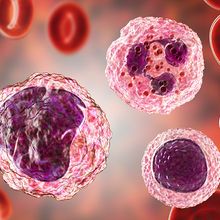
Enhancing Cell Morphology-Based Analysis
The Scientist’s Creative Services Team and Deepcell | 3 min read
Learn how the latest AI-driven technology uses morphology to comprehensively analyze and sort cell populations.
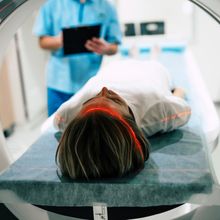
Researchers Report Decoding Thoughts from fMRI Data
Grace van Deelen | Oct 20, 2022 | 5 min read
A method appears to be the first to noninvasively reconstruct language from brain activity.
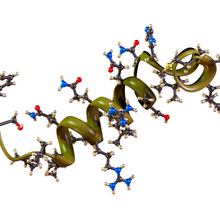
2023 Breakthrough Prizes Showcase Research in AI and Narcolepsy
Amanda Heidt | Sep 22, 2022 | 2 min read
Three prizes were awarded to six researchers working across the life sciences on cellular organization, protein structure, and the genetic underpinnings of a chronic sleep disorder.

The Laboratory of the Future: How New Technologies Reform Research
Maria Gklotsou, PhD | 4 min read
New advancements in automation, AI, connectivity, sustainability, and more propel research forward.
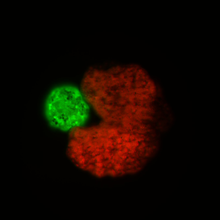
“Xenobot” Living Robots Can Reproduce
Chloe Tenn | Dec 2, 2021 | 2 min read
Biological robots made from frog cells can replicate by smooshing loose cells into new robots—a reproduction method not seen in any other organism.
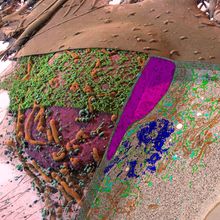
New Studies Enable a Clearer View Inside Cells
Andrew Chapman | Nov 4, 2021 | 5 min read
Armed with improved imaging techniques and supercomputers, researchers are generating detailed three-dimensional images of cellular structures that anyone can explore.

Real World Data: Opening New Avenues for Health Research
Liliana Garcia Mondragon, PhD | 4 min read
Scientists and clinicians increasingly use real world data (RWD) to make valuable discoveries that can be applied to the healthcare industry.

AI Helps Predict Winners and Losers in Clinical Trials
Roni Dengler, PhD | Aug 3, 2021 | 4 min read
Pradipta Ghosh has plans to revolutionize the drug discovery pipeline.
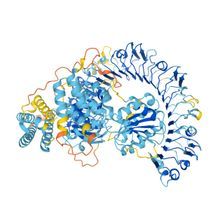
Predictions of Most Human Protein Structures Made Freely Available
Lisa Winter | Jul 23, 2021 | 3 min read
The AlphaFold program from AI firm DeepMind has amassed a huge database of protein structures from humans and model organisms.
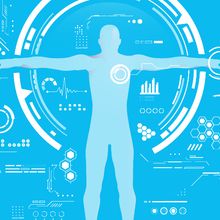
Breaking Through Big Data Bottlenecks
Tecan | 1 min read
Discover how machine learning helps scientists accelerate their research.
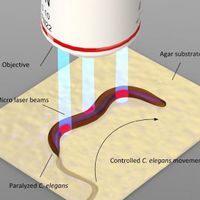
AI Controls Laser-Guided Robot Worms
Ruth Williams | Jul 8, 2021 | 3 min read
Automated control of light-responsive nematode worms marks the first foray into the development of multicellular, biorobotic organisms.
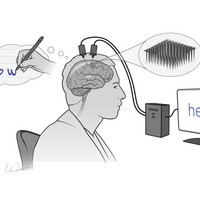
Brain-Computer Interface User Types 90 Characters Per Minute with Mind
Shawna Williams | May 13, 2021 | 4 min read
The experimental system, developed and tested in just one patient so far, relies on brain signals associated with handwriting to achieve the fastest communication yet seen with BCI.

Best of Cancer Research
The Scientist’s Creative Services Team | 1 min read
This collection of articles from The Scientist explores some of the latest cancer research!
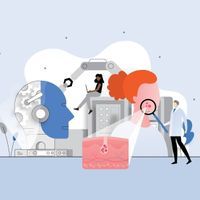
Opinion: AI Could Aid Cancer Diagnosis, but Caution Is Needed
Adewole S. Adamson | Apr 1, 2021 | 3 min read
While machine learning could improve detection of tumors at their earliest stages, it also risks identifying malignancies that would never cause the patient any harm.

Watch a Trained Pup Detect Prostate Cancer From a Urine Sample
Asher Jones | Feb 18, 2021 | 1 min read
Good girl, Florin!
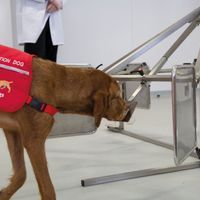
Dogs Are Teaching Machines to Sniff Out Cancer
Asher Jones | Feb 18, 2021 | 5 min read
In a proof-of-concept study, researchers used dogs’ diagnoses of prostate cancer to inform a machine learning algorithm with the goal of one day detecting cancers with canine-level accuracy.

AI-Assisted Cough Tracking Could Help Detect the Next Pandemic
Max Kozlov | Dec 6, 2020 | 7 min read
Some researchers have turned their focus to artificial intelligence to study an underused symptom common to most respiratory pathogens—cough.
